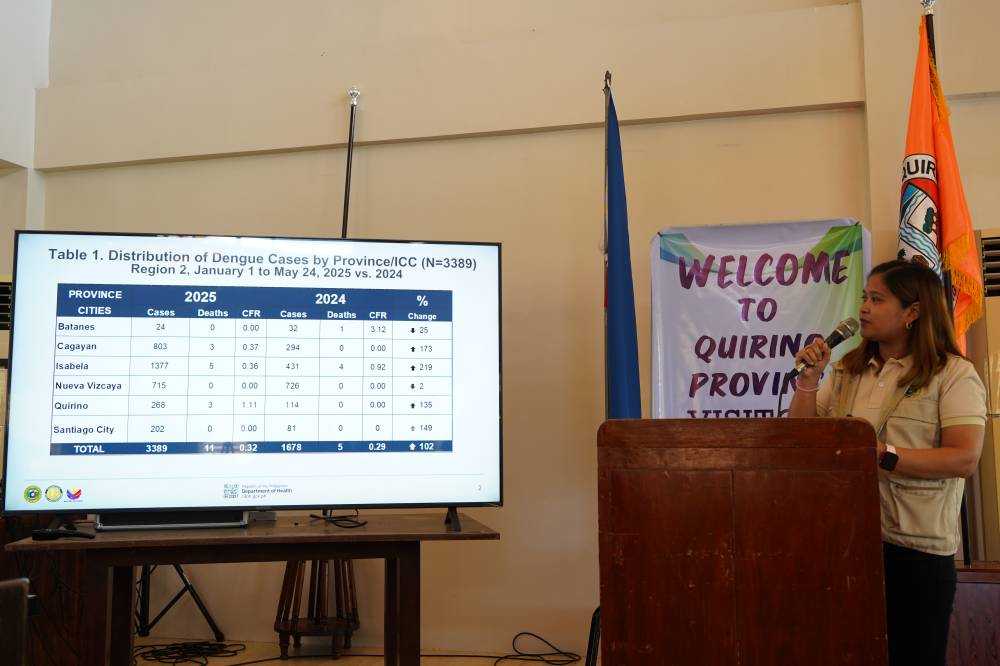In Cagayan Valley, dengue cases surge to over 3,000 with 11 deaths

CABARROGUIS, QUIRINO—The number of dengue cases in the Cagayan Valley Region has more than doubled in the first five months of 2025, with 3,389 infections and 11 deaths recorded between Jan. 1 and May 24.
This marked a sharp increase from the 1,678 cases and five deaths reported during the same period in 2024.
According to Dr. Janet Ibay, head of the Infectious Diseases Cluster of the Department of Health (DOH)-Cagayan Valley, there is an urgent need for stronger community participation to curb the continued spread of the mosquito-borne disease.
“Government efforts alone are not enough and that residents must take an active role in prevention,” Ibay said during a dengue situation forum held on Thursday at Quirino Sports Complex.
This year, Isabela province recorded the highest number of cases, with 1,377 and five deaths, compared to 431 cases and four deaths last year—a staggering 219-percent increase.
Cagayan followed with 803 cases, up from 294 in 2024, reflecting a 173-percent rise.
Quirino saw an increase from 114 to 268 cases, or 135 percent more than the previous year. The independent city of Santiago reported 202 cases, a 149-percent jump from last year.
Only Nueva Vizcaya and Batanes recorded a decline in dengue cases. Batanes logged 24 cases this year, down from 32 in 2024. Nueva Vizcaya saw a slight two-percent drop, from 726 cases last year to 715 in 2025.
Fatalities this year include five in Isabela, three in Cagayan, and three in Quirino. In contrast, 2024 recorded only five deaths—four in Isabela and one in Batanes.
Increasing risk
Ibay also warned that recent high temperatures did not guarantee a dengue-free environment, saying dengue cases could still occur even during hot weather and that the risk may increase during the rainy season due to higher chances of mosquito breeding if proper preventive measures were not observed.
Dr. Alexis Milan, a pediatrician based in Quezon City and a dengue awareness lecturer, recommended better screening and diagnosis of both outpatient and hospitalized dengue cases. He noted that outbreaks typically recur every five to six years, which makes a proactive response all the more crucial.
The DOH attributed the spike in cases to the expansive geography and high population density of the provinces, along with a continuing lack of active community cooperation.
The DOH has intensified its anti-dengue campaign in areas with high case counts to prevent further spread.
Ibay noted the importance of public hygiene and adherence to the department’s “5S strategy” —to search and destroy mosquito breeding sites; use self-protection measures such as repellents; seek early medical consultation; support fogging operations only during outbreaks; and sustain hydration to aid recovery.
Dr. Mila Villar, provincial health officer of Quirino, urged residents to consult a doctor immediately upon experiencing dengue symptoms to avoid serious complications or fatalities.
















